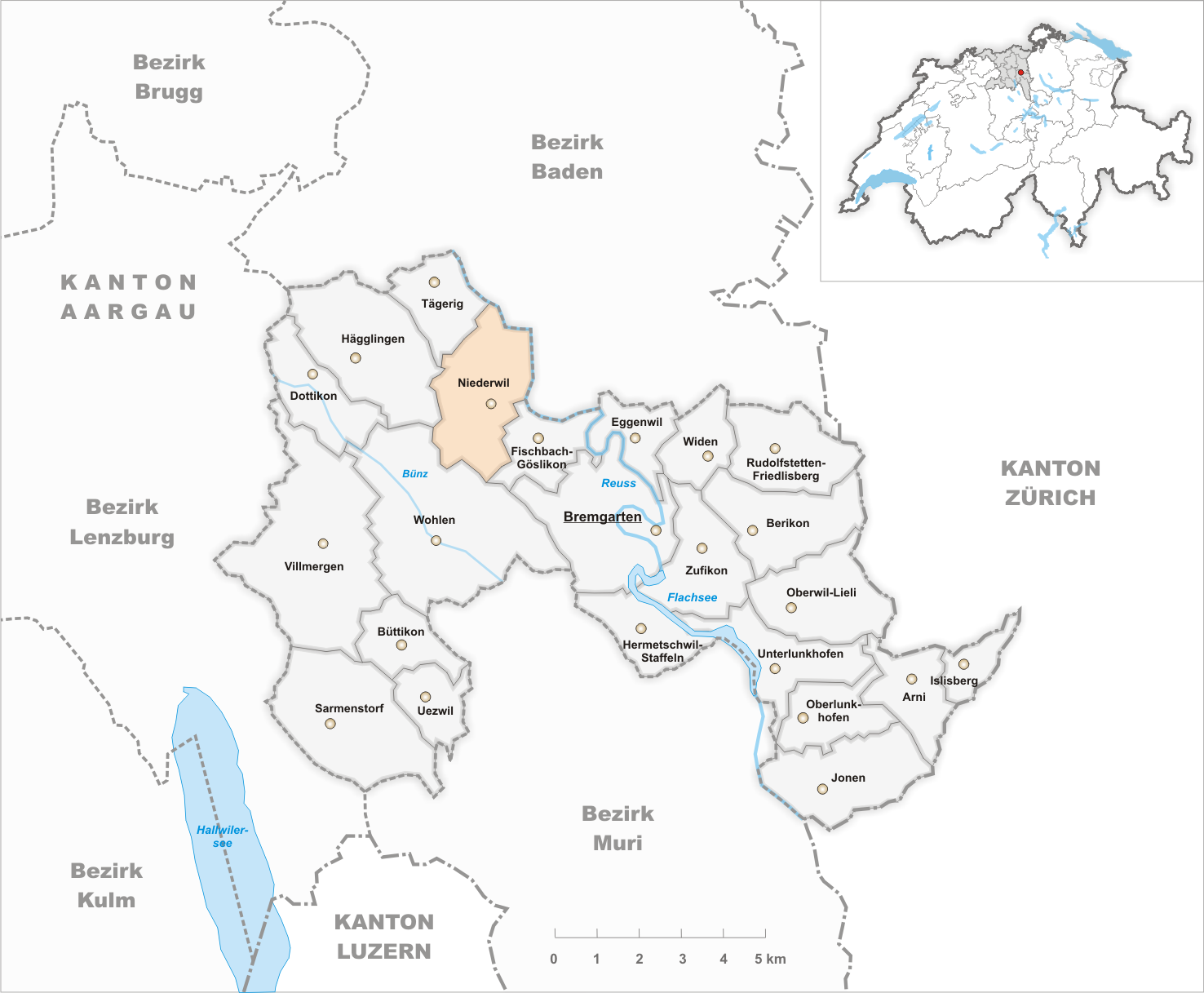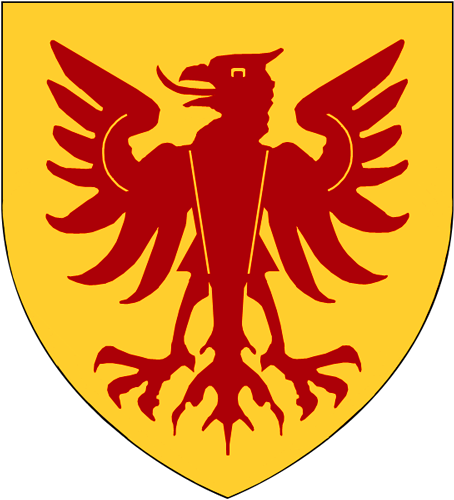|
Niederwil, Aargau
Niederwil is a municipality in the district of Bremgarten in the canton of Aargau in Switzerland. History The first traces of human settlement near Niederwil are several scattered neolithic stones axes. During the Roman era, there was a small settlement. Near the church is the ruins of a Roman era wall, and there was a Roman treasury at what is now ''Riedmatte''. An iron spearhead from the 7th Century was discovered in the municipality, but all details of the discovery have been lost. The village of Niederwil is first mentioned in 924 as ''Wilare''. The rights to high justice were held throughout the High and Late Middle Ages by the Counts of Lenzburg. Following their extinction, the rights were held by the House of Habsburg, and after the 1415 conquest of Aargau, they were held by the Old Swiss Confederation. The rights to low justice were held by Schänis Abbey in Gaster. Geography Niederwil has an area, , of . Of this area, 53% is used for agricultural purpose ... [...More Info...] [...Related Items...] OR: [Wikipedia] [Google] [Baidu] |
Solothurn
, neighboring_municipalities = Bellach, Biberist, Feldbrunnen-Sankt Niklaus, Langendorf, Rüttenen, Zuchwil , twintowns = Heilbronn (Germany), Kraków (Poland), Le Landeron (Switzerland) Solothurn ( , ; french: Soleure ; it, Soletta ; rm, ) is a town, a municipality, and the capital of the canton of Solothurn in Switzerland. It is located in the north-west of Switzerland on the banks of the Aare and on the foot of the Weissenstein Jura mountains. The town is the only municipality of the district of the same name. The town got its name from Salodurum, a Roman-era settlement. From 1530 to 1792 it was the seat of the French ambassador to Switzerland. The pedestrian-only old town was built between 1530 and 1792 and shows an impressive array of Baroque architecture, combining Italian Grandezza, French style, and Swiss ideas. The town has eighteen structures listed as heritage sites. The official language of Solothurn is (the Swiss variety of Standard) German, but the mai ... [...More Info...] [...Related Items...] OR: [Wikipedia] [Google] [Baidu] |
Late Middle Ages
The Late Middle Ages or Late Medieval Period was the period of European history lasting from AD 1300 to 1500. The Late Middle Ages followed the High Middle Ages and preceded the onset of the early modern period (and in much of Europe, the Renaissance). Around 1300, centuries of prosperity and growth in Europe came to a halt. A series of famines and plagues, including the Great Famine of 1315–1317 and the Black Death, reduced the population to around half of what it had been before the calamities. Along with depopulation came social unrest and endemic warfare. France and England experienced serious peasant uprisings, such as the Jacquerie and the Peasants' Revolt, as well as over a century of intermittent conflict, the Hundred Years' War. To add to the many problems of the period, the unity of the Catholic Church was temporarily shattered by the Western Schism. Collectively, those events are sometimes called the Crisis of the Late Middle Ages. Despite the crises, the 1 ... [...More Info...] [...Related Items...] OR: [Wikipedia] [Google] [Baidu] |
Rent-to-own
Rent-to-own, also known as rental purchase or rent-to-buy, is a type of legally documented transaction under which tangible property, such as furniture, consumer electronics, motor vehicles, home appliances, real property, and engagement rings, is leased in exchange for a weekly or monthly payment, with the option to purchase at some point during the agreement. A rent-to-own transaction differs from a traditional lease, in that the lessee can purchase the leased item at any time during the agreement (in a traditional lease the lessee has no such right), and from a hire purchase/installment plan, in that the lessee can terminate the agreement by simply returning the property (in a hire purchase the buyer has a limited time, if any, to cancel the agreement). The usage of rent-to-own transactions began in the United Kingdom and Europe, and first appeared in the United States during the 1950s and 1960s. While rent-to-own terminology is most commonly associated with consumer goods ... [...More Info...] [...Related Items...] OR: [Wikipedia] [Google] [Baidu] |
Mortgage Loan
A mortgage loan or simply mortgage (), in civil law jurisdicions known also as a hypothec loan, is a loan used either by purchasers of real property to raise funds to buy real estate, or by existing property owners to raise funds for any purpose while putting a lien on the property being mortgaged. The loan is " secured" on the borrower's property through a process known as mortgage origination. This means that a legal mechanism is put into place which allows the lender to take possession and sell the secured property (" foreclosure" or " repossession") to pay off the loan in the event the borrower defaults on the loan or otherwise fails to abide by its terms. The word ''mortgage'' is derived from a Law French term used in Britain in the Middle Ages meaning "death pledge" and refers to the pledge ending (dying) when either the obligation is fulfilled or the property is taken through foreclosure. A mortgage can also be described as "a borrower giving consideration in the ... [...More Info...] [...Related Items...] OR: [Wikipedia] [Google] [Baidu] |
Coat Of Arms
A coat of arms is a heraldic visual design on an escutcheon (i.e., shield), surcoat, or tabard (the latter two being outer garments). The coat of arms on an escutcheon forms the central element of the full heraldic achievement, which in its whole consists of a shield, supporters, a crest, and a motto. A coat of arms is traditionally unique to an individual person, family, state, organization, school or corporation. The term itself of 'coat of arms' describing in modern times just the heraldic design, originates from the description of the entire medieval chainmail 'surcoat' garment used in combat or preparation for the latter. Rolls of arms are collections of many coats of arms, and since the early Modern Age centuries, they have been a source of information for public showing and tracing the membership of a noble family, and therefore its genealogy across time. History Heraldic designs came into general use among European nobility in the 12th century. Sys ... [...More Info...] [...Related Items...] OR: [Wikipedia] [Google] [Baidu] |
Blazon
In heraldry and heraldic vexillology, a blazon is a formal description of a coat of arms, flag or similar emblem, from which the reader can reconstruct the appropriate image. The verb ''to blazon'' means to create such a description. The visual depiction of a coat of arms or flag has traditionally had considerable latitude in design, but a verbal blazon specifies the essentially distinctive elements. A coat of arms or flag is therefore primarily defined not by a picture but rather by the wording of its blazon (though in modern usage flags are often additionally and more precisely defined using geometrical specifications). ''Blazon'' is also the specialized language in which a blazon is written, and, as a verb, the act of writing such a description. ''Blazonry'' is the art, craft or practice of creating a blazon. The language employed in ''blazonry'' has its own vocabulary, grammar and syntax, which becomes essential for comprehension when blazoning a complex coat of arms. Other ... [...More Info...] [...Related Items...] OR: [Wikipedia] [Google] [Baidu] |
Convent
A convent is a community of monks, nuns, religious brothers or, sisters or priests. Alternatively, ''convent'' means the building used by the community. The word is particularly used in the Catholic Church, Lutheran churches, and the Anglican Communion. Etymology and usage The term ''convent'' derives via Old French from Latin ''conventus'', perfect participle of the verb ''convenio'', meaning "to convene, to come together". It was first used in this sense when the eremitical life began to be combined with the cenobitical. The original reference was to the gathering of mendicants who spent much of their time travelling. Technically, a monastery is a secluded community of monastics, whereas a friary or convent is a community of mendicants (which, by contrast, might be located in a city), and a canonry is a community of canons regular. The terms abbey and priory can be applied to both monasteries and canonries; an abbey is headed by an abbot, and a priory is a lesser de ... [...More Info...] [...Related Items...] OR: [Wikipedia] [Google] [Baidu] |
Reuss (river)
The Reuss ( Swiss German: ''Rüüss'') is a river in Switzerland. With a length of and a drainage basin of , it is the fourth largest river in Switzerland (after the Rhine, Aare and Rhône). The upper Reuss forms the main valley of the canton of Uri. The course of the lower Reuss runs from Lake Lucerne to the confluence with the Aare at Brugg and Windisch. The Reuss is one of the four major rivers taking their source in the Gotthard region, along with the Rhine, Ticino and Rhône. Geography Course The Gotthardreuss rises in the Gotthard massif, emerging from Lago di Lucendro (reservoir built in 1947; elevation 2,131 m) in the canton of Ticino and passing into the canton of Uri below the ''Brigghubel'' (1,898 m). The Furkareuss rises east of Furka Pass (2,429 m), early joined by the ''Blaubergbach'' (sourced by two mountain lakes on 2,649 m) and several other creeks sourced by still existing glaciers, such as ''Sidelengletscher'' (3,1 ... [...More Info...] [...Related Items...] OR: [Wikipedia] [Google] [Baidu] |
Gaster (district)
See-Gaster is a constituency (''Wahlkreis'') in the canton of St. Gallen in Switzerland. The Wahlkreis ( SFOS number 1726) has been established on June 10, 2001, with an area of . It was formed from the former ''See'' and ''Gaster'' districts in 2001. History The name ''Gaster'' is from Latin ''castrum'' "castle"; a it is first recorded in 1230. The Gaster districts corresponded to the historical county of Windegg. The ''See'' district corresponded to the historical counties of Rapperswil and Uznach. In the medieval period, the area was owned by the counts of Lenzburg, from 1172 by Kyburg, from 1269 by House of Habsburg, Habsburg, from 1406 by counts of Toggenburg, Toggenburg and from 1436 again briefly by Habsburg, until 1438 when duke Frederick gave it to Schwyz and Glarus as a condominium. Schänis was administrative center and site of the Landsgemeinde of Gaster. Rapperswil was ruled by its own counts of Rapperswil, counts until its destruction in 1350, after which it fel ... [...More Info...] [...Related Items...] OR: [Wikipedia] [Google] [Baidu] |
Schänis Abbey
Schänis Abbey (german: Kloster Schänis) was founded in the 9th century. It was situated in the present town of Schänis in the canton of St. Gallen, Switzerland. It was a house of secular canonesses of the nobility (german: adliges Damenstift) and was dissolved in 1811. History According to the report of a monk from Reichenau Abbey the founder was believed to be Count Hunfried of Chur-Rhaetia, who was said to have promised Charlemagne to make the foundation for the worthy safekeeping of a precious reliquary cross containing a fragments of the True Cross, as well as an onyx vessel containing some of the Blood of Christ. Such evidence as is available does indicate that the abbey was founded at about that time, possibly as a daughter foundation of St. Stephan's Abbey in Strasbourg, but the foundation at Schänis soon fell into obscurity. After many years Ulrich I, Count of Lenzburg, restored the abbey to prosperity and a sound economic footing by numerous gifts of property. Al ... [...More Info...] [...Related Items...] OR: [Wikipedia] [Google] [Baidu] |






